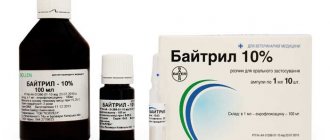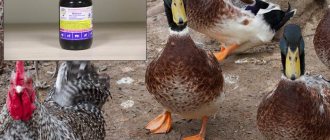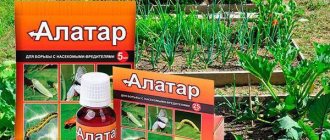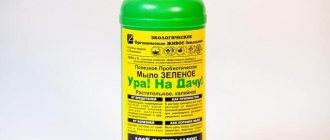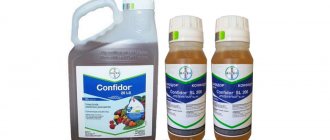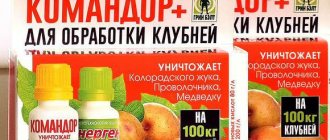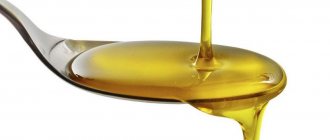Release form, composition and packaging of the drug
"Nitox 200" is a viscous injection solution intended for intramuscular administration. The composition includes an antibiotic component of the tetracycline series - oxytetracycline in hydrated form in an amount of 200 milligrams per 1 milliliter of the total volume of the solution.
The presence of an auxiliary component, magnesium oxide, causes the formation of a magnesium complex of the main active substance, due to which the effect of the product is prolonged up to 3 days after injection. The standard treatment regimen for most diseases is a single intramuscular injection of an antibiotic. Nitox 200 is recommended as a remedy for a number of infectious and inflammatory diseases. The drug is allowed to be administered to a calf against diarrhea (which often becomes an alarming problem among young animals), in strictly recommended doses.
Expert opinion
Zarechny Maxim Valerievich
Agronomist with 12 years of experience. Our best country expert.
Ask a Question
The injection solution "Nitox 200" is packaged in dark glass bottles for rolling with rubber stoppers under an aluminum cap with a volume of 20, 50, 100 milliliters.
Pharmacological (biological) properties and effects
Antibacterial drug of the tetracycline group.
Oxytetracycline dihydrate, which is part of the drug, has a bacteriostatic effect and is active against most gram-positive and gram-negative bacteria
, incl. Streptococcus spp., Staphylococcus spp., Corynebacterium spp., Clostridium spp., Erysipelothrix spp., Pasteurella spp., Fusobacterium spp., Salmonella spp., Pseudomonas spp., Actinobacteria spp., Escherichia spp., Chlamydia spp., Rickettsia spp. ., and Spirochaetes spp.
The mechanism of action of oxytetracycline is to suppress the protein synthesis of microorganisms. The long-term (prolonged) effect of the drug is due to the complex of oxytetracycline dihydrate with magnesium. With intramuscular administration of oxytetracycline dihydrate is quickly absorbed from the injection site and reaches maximum concentrations in organs and tissues 30-50 minutes after administration. The therapeutic level of the antibiotic in the blood serum is maintained for 60-72 hours. Oxytetracycline dihydrate is excreted from the body mainly with urine and bile, and in lactating animals - partially with milk.
In terms of the degree of impact on the body, Nitox® 200 is classified as a moderately hazardous substance (hazard class 3 according to GOST 12.1.007-76).
Indications for use
Oxytetracycline in a prolonged form, contained in Nitox 200, exhibits antibacterial activity against various types of pathogens.
The range of active effects of the drug extends to representatives of pathogenic flora of various structures and nature, the list of which includes:
- streptococci;
- staphylococci;
- clostridia;
- corynebacteria;
- salmonella;
- fusobacteria;
- Eicherichia;
- chlamydia;
- spirochetes.
See also
Instructions for use and composition of Feeder for calves, feeding ratesRead
"Nitox 200" inhibits the assembly of protein molecules in the bacterial cell, which leads to growth cessation and prevents the proliferation of pathogens (bacteriostatic effect). The injected drug circulates in the bloodstream maintaining a therapeutic concentration for up to 72 hours.
"Nitox 200" is indicated for the treatment of infections in cattle caused by antibiotic-susceptible bacteria, including:
- respiratory manifestations;
- inflammatory processes in the mammary glands;
- enzootic abortion;
- keratitis and conjunctivitis;
- pasteurellosis;
- triple symptomatic complex endometritis-mastitis-agalactia;
- purulent, wound, postpartum infections;
- footrot;
- peritonitis;
- infection of the umbilical wound.
The drug is also used for intestinal bacterial infections, parasitic infestations (anaplasmosis), and signs of bacterial complications after viral diseases.
Restrictions
Slaughter of animals for meat is permitted no earlier than 21 days after administration of the drug.
https://www.youtube.com/watch?v=ciPdU7rGXu4
The meat of animals forcedly killed before the expiration of the specified periods is used directly for feeding animals or for the production of meat and bone meal.
Milk should not be consumed or processed within 7 days after administration of the drug. Such milk can be used to feed animals after heat treatment.
The result of the injection may be redness of the skin (erythema) and itching; this does not last long and disappears without additional treatment. If you have an allergic response to the injection, you can inject the animal with calcium chloride.
Manifestations of an overdose are expressed in the lack of desire to eat or inflammation of the injection site. If these signs are detected, injections of the drug are stopped.
Eliminate the consequences with the same therapeutic agents based on calcium compounds. It is unacceptable to use Nitox 200 in the following cases:
- kidney diseases;
- fungal mycoses;
- pregnant females and calves, piglets and kids up to three months;
- intolerance to tetracycline drugs.
Injections should definitely not be used on cats and dogs. As for horses, despite the prohibition of the instructions, there is practice of use, and the reviews about it are positive. Combined use of the drug with penicillin antibiotics reduces its effect.
Use of livestock products. Slaughter for meat after treating an animal with this drug is permitted after three weeks. If the animal was slaughtered earlier, it is used as food for predators or for making bone meal.
Sheep, cow and goat milk after temperature treatment can be added to animal feed. A person should not consume it, in any form, before the expiration of a week.
We invite you to read: Responsibility for illegal retention of someone else’s property
Reviews about the application
The vast majority of livestock breeders who have used Nitox 200 in their practice agree that the drug is effective and rarely requires a second injection. Moreover, in addition to the animal breeds recommended for use, reviews say that it is also used in the treatment of rabbits, pigeons and horses.
“Despite the instructions prohibiting the use of Nitox 200 on horses, I did it because there was nothing else left. And the horse stood up!”
Alexei. Novosibirsk city.
“I have a dovecote, and I add Nitox 200 to the pigeons’ drinking bowls, this helps them not get sick, although their numbers are considerable.”
Fedor Kuzmich. Russia.
“In our village there are no veterinarians, we treat ourselves. It so happened that the rabbits suddenly began to eat poorly and were completely passive. I read the instructions and decided to try injecting them. The dosage was done according to the recommended principle. After three days everyone got better, it helped.”
Raisa. Altai region.
Instructions for use of Nitox 200 for cows
The antibiotic is intended for animals with characteristic signs of bacterial infection and inflammation. The injectable drug is injected into deep-lying muscle layers once, having previously calculated the dosage. To treat cows, it is necessary to use 1 milliliter of solution per 10 kilograms of animal weight.
Expert opinion
Zarechny Maxim Valerievich
Agronomist with 12 years of experience. Our best country expert.
Ask a Question
A dose of Nitox 200 over 20 milliliters requires distribution of the total volume of solution at different points for fractional injection administration.
In case of severe infections, the injection may be repeated 72 hours after the first procedure. A missed dose does not require compensation; the treatment course is continued as usual.
In what cases should it not be used?
Before using the drug, you should consider the restrictions on its use. Nitox 200 has the following contraindications:
- hypersensitivity to the components of the composition;
- severe renal dysfunction, renal failure;
- fungal diseases.
Relative contraindications are pregnancy and lactation. Treatment should be carried out by a veterinarian, with an assessment of the ratio of potential risks and possible benefits.
Contraindications and precautions
Milk absorbs the active component of the medicine well, therefore, according to the instructions of Nitox for animals, when administering the vaccine to dairy species, a person is strictly prohibited from consuming their milk for 7 days, and animal meat for three weeks.
In accordance with the instructions for use of Nitox 200 in veterinary medicine, a sick animal may have a severe allergic reaction, manifested as a rash or redness of the skin. In this case, it is recommended to protect the animal from scratching the affected areas. If allergies are severe, it is recommended to administer drugs that neutralize the effect of magnesium, for example, calcium chloride or calcium borogluconate intravenously.
It is not recommended to combine Nitox 200 with corticosteroid and estrogen hormonal drugs, as well as other similar antibiotics of the cephalosporin and penicillin category, as the effect of the drug may be reduced. Treatment is also contraindicated for renal failure, fungal mycoses or tetracycline intolerance.
Features of application:
- With long-term therapy, the development of septicemia (blood poisoning) or candidiasis (a disease of the skin and mucous membranes) has been recorded.
- Administration of the medicine to pregnant individuals and while breastfeeding is strictly prohibited. In case of drug overdose, stop administration.
- Store in cool, dry and dark places, out of the reach of children, separately from other medicines and food at a temperature of 0 ° C - + 20 ° C. The shelf life is 12 months from the date of manufacture and 28 days from the moment the bottle is opened.
- It is necessary to work with the drug only with gloves. After completing preventive actions, wash your hands thoroughly.
- It is strictly forbidden to eat, smoke or drink while working with the drug.
- In case of contact with skin or eyes, rinse thoroughly under running water. If an allergic reaction occurs or the medicine enters the body, you should immediately consult a doctor.
- Use the medicine only as prescribed by a doctor.
- The maximum dose of vaccine for cattle is 20 ml, for pigs - 10 ml, for sheep - 5 ml.
- Empty bottles must not be reused for any purpose.
Are there any side effects?
Therapy using Nitox 200 can provoke the development of unwanted reactions in the animal’s body, most of which do not require medical intervention and go away on their own. The following side effects have been reported:
- local response in the injection area (redness, itching of the skin);
- allergic manifestations;
- candidiasis.
See also
The best age of cows for mating and possible problems with inseminationRead
Severe forms of mycoses, inflammation at the site of injection of the solution, loss of appetite occur with a long treatment course or exceeding the recommended dosage. The development of complications requires discontinuation of use of the drug and provision of symptomatic medical care, including the injection of calcium supplements.
IV. Application procedure
11. Nitox Forte is prescribed to cattle and pigs for the treatment of acute and chronic diseases of the respiratory system, gastrointestinal tract, genitourinary system, pasteurellosis, peritonitis, purulent arthritis, operating rooms, wound infections, keratoconjunctivitis, hoof rot, anaplasmosis, MMA syndrome of sows and other primary and secondary infections of bacterial etiology, the pathogens of which are sensitive to tetracyclines. 12. A contraindication to the use of the drug is the animal’s increased individual sensitivity to tetracycline antibiotics and/or non-steroidal anti-inflammatory drugs. Intravenous or intra-aortic administration of Nitox Forte is prohibited, its use in cardiac, hepatic or renal failure and in animals with mycoses, as well as in dairy cows whose milk is used for food purposes. 13. Nitox Forte is administered to animals once deeply intramuscularly at a dose of 1 ml of the drug per 10 kg of animal weight (30 mg of oxytetracycline dihydrate and 2 mg of flunixin per 1 kg of weight). If necessary and in case of a chronic course of the disease, repeated administration of the drug Nitox Forte is allowed after 5 days. The maximum dose for administration to one point of the body for adult animals is 10 ml, for young animals – 5 ml. If the volume of the injected solution is more than specified, then it should be administered to the animals in several places. At temperatures below 5°C, the viscosity of the drug increases slightly and its administration may be difficult. In this case, it is recommended to warm the solution and syringes to room temperature, which will make it easy to draw the drug into the syringe and administer it to the animals. 14. Symptoms of overdose: refusal to feed, inflammatory reaction at the injection site, symptoms of nephropathy, gastrointestinal bleeding. In this case, intravenous administration of calcium preparations (calcium chloride, calcium borogluconate) and symptomatic therapy are recommended. 15. No specific effects were identified during the first use of the drug and upon its discontinuation. 16. The drug Nitox Forte should not be used by females in late pregnancy, as well as by young animals during the period of tooth growth, due to a possible change in the color of the enamel
For sows during the feeding period, when treating MMA syndrome, use with caution under the supervision of a veterinarian. 17
Nitox Forte is usually used once. If it is necessary to re-use the drug, the interval between administrations established in the instructions should be observed. 18. When using the drug in accordance with these instructions, side effects and complications, as a rule, are not observed. In some animals, a local inflammatory reaction in the form of erythema and itching may occur at the site of drug administration, which quickly passes and does not require treatment. In case of increased individual sensitivity of the animal to antibiotics of the tetracycline group and the development of a stable allergic reaction, desensitizing therapy is carried out. In the event of anaphylactic shock, animals are prescribed adrenaline, corticosteroids and antihistamines in accordance with the instructions for their use. 19. Nitox Forte cannot be used simultaneously with estrogens, with bactericidal drugs of the penicillin and cephalosporin series, due to a possible decrease in the antibacterial effect, simultaneously with non-steroidal anti-inflammatory drugs and corticosteroids, as well as 24 hours before and 24 hours after the end of their use, in association with an increased risk of ulcer formation in the gastrointestinal tract. 20. Slaughter of cattle and pigs for meat is permitted no earlier than 35 days after the last administration of Nitox Forte. The meat of animals forcedly killed before the expiration of the specified periods is used to feed carnivores.
Special instructions and personal preventive measures
"Nitox 200" is not used in conjunction with hormonal agents based on glucocorticoids and estrogen compounds. Penicillins and cephalosporins reduce the effectiveness of oxytetracycline. Meat slaughter of livestock is possible 28 days after treatment with the drug. If slaughtered earlier, the meat is suitable for animal feeding. Oxytetracycline penetrates into milk, which is allowed to be fed to animals after boiling. For safe use of milk by humans, it is necessary to wait 1 week after injection.
Personal prevention
Interaction with the drug requires compliance with standard rules for safe handling of the chemical and personal hygiene standards. It is recommended to limit direct contact with the composition as much as possible and wash your hands in soapy water after the procedure. If the product gets on the skin or mucous membranes, rinse the area with water; if the condition worsens, seek medical help. The remaining container from the antibiotic solution cannot be used in everyday life.
Indications and contraindications
The drug is intended for the treatment and prevention of cattle, pigs, sheep and goats. Do not use the product on horses, dogs, cats or other non-productive domestic animals.
"Nitox" is effective for the treatment of infectious and fungal diseases that are sensitive to tetracycline drugs. Nitox injections are prescribed for:
- pneumonia;
- mastitis;
- diphtheria;
- anaplasmosis;
- pneumonia;
- sepsis;
- pleurisy;
- conjunctivitis;
- rhinitis;
- purulent arthritis;
- erysipelas;
- wound infections and abscesses;
- hoof rot;
- peritonitis;
- vitamin deficiency;
- enzootic abortions;
- postpartum infections.
The drug is also suitable for prevention, as well as for suppressing secondary infections and fungal infections that occur against the background of more serious diseases. When treating, it is advisable to consult a veterinarian. An examination is also needed after completing the course: it will confirm that the therapy was carried out successfully. According to the doctor's indications, the course can be repeated or extended.
Nitox 200 has few contraindications. The main thing is an individual allergic reaction to the main and accompanying components. The medicine is not suitable for treating animals with renal failure. It is not recommended to use the drug simultaneously with corticosteroids and estrogens
If an animal is undergoing complex treatment with antibiotics, it is important to ensure that Nitox is not used simultaneously with penicillin and cephalosporin medications. They significantly reduce the effectiveness of tetracycline and its derivatives
There are restrictions associated with productive livestock. During treatment, milk from cows, sheep and goats should not be consumed. It is crushed and poured out. Milk can be used to fatten calves, but only after heat treatment.
Animals can be slaughtered for meat no earlier than 20 days after injection. Otherwise, the meat becomes unfit for food and is processed into meat and bone meal or fed to animals.
When treated with Nitox, minor side effects are possible. After injections, some animals experience swelling at the puncture site, redness of the skin, and itching. Usually these manifestations go away on their own, without additional treatment. But if the animal is worried, you can relieve negative symptoms with calcium supplements, which are administered intravenously.
